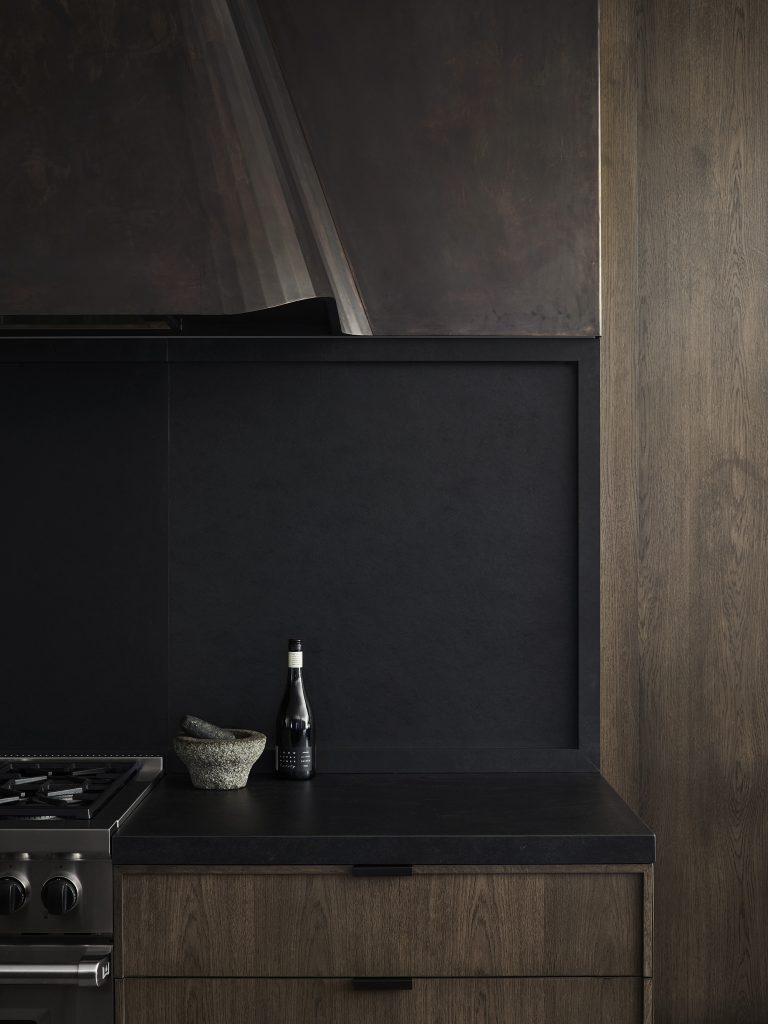
Organic, untouched, carved, or modified; wood will always retain its timeless beauty and versatility. With its many faces and origins, this material is highly valued in interior design as its natural grains and colors embrace spaces with authenticity and a connection to nature. Moreover, its malleable nature that allows us to transform it in various ways to fit our needs and styles, from rustic to modern elegance, makes it a worthy material for discussion. When responsibly sourced, this renewable resource can be used to convey a message through décor by going over a thoughtful selection, placement, and styling of wooden elements to communicate visually with our guests. Today we will explain how this can be accomplished and in doing so provide a space to celebrate and admire the longstanding presence of wood in our lives.

Types of wood
Among the rich, and dark woods that exude elegance and luxury we have walnut and mahogany. Both are often associated with sophistication and serve to convey a sense of opulence and warmth across different décor styles. For example, when paired with traditional and vintage designs walnut and mahogany wooden furniture or flooring creates a dramatic effect that romanticizes the past. At the same time, both woods can also be found in mid-century modern and contemporary designs that focus more on the quality of the materials and less on elaborate decorative effects.

In contrast, we also have the lighter, pale woods with soft grains that we associate with clean and airy environments. Among them is cherry wood which comes in a reddish-brown hue with a smooth fine grain that facilitates its placement in any interior but in particular within traditional and formal space since it conveys a sense of warmth, refinement, and connection to heritage. When compared to this wood, maple and pine appear with lighter colors that create a more relaxed and casual look. For this reason they are more likely to be found in modern and Scandinavian design styles that suggest simplicity, minimalism, and a sense of openness that connects the indoors with nature.

As a last example we can take a look at oak wood and birch as versatile materials that can be used in various design styles. While associated with classic and traditional interiors, oak can suggest a sense of stability, strength, and organic beauty that can either be applied to enhance a rustic interior or a clean, modern aesthetic. Likewise, birch’s adaptable nature thanks to its pale color and subtle grain pattern, is suitable for multiple design styles from contemporary to minimalist or coastal interiors.

Reading the type and quality of wood
Identifying the unique qualities in each type of wood to decide on the best candidate suited for your interior requires using more than one sense. Through sight we can distinguish the grain patterns that belong to each wood type such as the pronounced grain of wood or the subtle, more uniform grain of maple. One can also pay attention to the wood’s natural color in unfinished areas that have not been altered to identify the origins of the piece.

Moving on to touch, try running your hand over the wood’s surface to feel its texture and identify its species through it. Some woods like maple have a smooth, fine feel while others are rough or more pronounced to the touch as is the case with oak. The sleek surface of smooth woods, for example, can complement modern interiors as part of a minimalist furniture set while rugged woods go well with rustic or more natural interiors. Therefore, if we explore a bit more, one can also notice details such as the knots and burls in wood that add character and uniqueness to each piece. These natural imperfections remind us that no wooden table, chair, or bureau is the same, even if they are made with the same wood.

Next comes smell- since no wood has the same type of scent, this is one of the most telling qualities of this material. Cedar, for example, exudes a soft and pleasant aroma that does not overpower our sense of smell; meanwhile, teak has a very distinct fragrance that mixes sweetness and an earthy richness with a nutty undertone. Since smell is closely tied to memory, the scent of the wooden furniture you select will subtly yet surely influence your recollection of your home in years to come.

Now let’s go back to observing the visual qualities of wood but from an even closer angle that exposes the end grain, joinery, and finish of your furniture and wooden surfaces. The first aspect provides information about the wood’s age through its growth rings which is crucial to understand the history, composition, and structural properties of our furnishings. Meanwhile, if we turn our sight to the way wood is joined together we will be able to identify the skilled craftsmanship behind the pieces. For example, quality wooden furniture often features joinery such as dovetail, mortise, and tenon as well as tongue and groove joints; all of these are traditional woodworking techniques that create strong and long-lasting connections. When combined with a hand-applied finish these features contribute further to strengthening the sense of craftsmanship and aesthetic appeal of your furniture.

A means of expression
Using wood in interior décor is ultimately a way of expressing ourselves, evoking a particular mood, and communicating a style to both ourselves and others. This decision, as explained above, requires us not only to look at the wood types and colors available but to also awaken our sense of touch and smell to find the one that resonates the most with our desired interior design and identity. This is how, by paying close attention to the individual stories of wood we can also craft our own narrative indoors.
